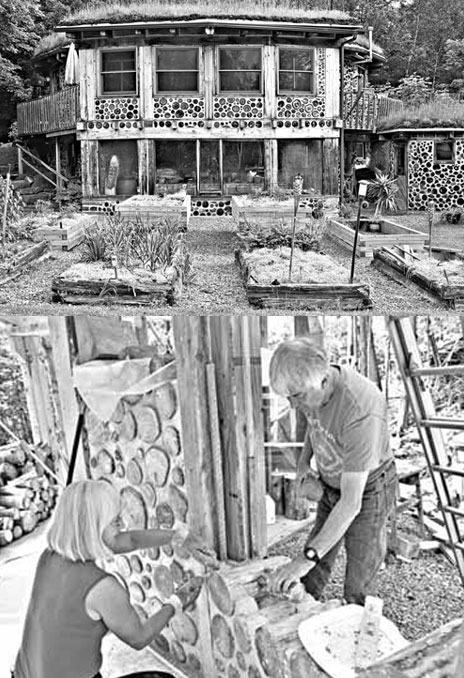Using wood and mortar to build a peculiar home
 |
|
Earthwood, in upstate New York, was built using cordwood masonry. Rob and Jaki Roy laid cedar logs into a wall. Photographs by Tony Cenicola / The New York Times |
WEST CHAZY, New York - Rob and Jaki Roy have been building for 30 years. And they have been writing and lecturing on their craft at their Earthwood Building School here, about 20 kilometers west of Lake Champlain and south of the Canadian border, for just as long.
Their peculiar building method, which employs sticks and mortar, is called cordwood masonry. Its earthy alchemy: creating a masonry wall with short lengths of exposed wood in place of brick or stone.
As Mr. Roy said, "If you can stack wood, you can build a cordwood house."
The Roys contend that the practice is suited to all types of people: low-income landowners and vacation-home dreamers, energy-efficiency fanatics and back-to-the-landers.
A cordwood wall looks the same inside and out: the logs go all the way through. And the houses' shaggy green roofs, cozy dimensions and folksy finishes make them more suited to the country than any urban setting.
For most cordwood practitioners, Mr. Roy, 65, said, "it's a means of building the kind of house they want for an affordable price." If you can manage the labor, and shop for supplies in the Dumpster, a new cordwood home can be built for just $20 a square foot (about 930 square centimeters), he said. That's a quarter of the average price for a contractor-built home, based on recent American census figures.
Census data indicate that owner-built housing starts dropped steeply during the endless recession. Yet attendance at the Earthwood school has doubled in the last year, to 40.
There may be 200 to 300 cordwood homes and outbuildings in construction (and about 1,500 completed) across North America, said Richard Flatau, who wrote the new book "Cordwood Construction: Best Practices" and runs workshops and a Web site about the subject.
William H. Tishler, a professor emeritus of landscape architecture at the University of Wisconsin, has traced some of the earliest cordwood structures back to the hardscrabble settlements of the mid-to-late 19th century.
















